
Contents










Focus · Written by Park Jina Photographed by Studio Kenn
Flavor Ripening in Tranquility
Sunchang Gochujang Village & Imsil Cheese Village
Two of Korea’s most famous foods, gochujang (red chili paste) and Imsil cheese, both of which require
patience to make, come from two small towns in Jeollabuk-do Province. Locals who strive to preserve the traditions
of their communities have not only created the best quality in both of these foods, but turned their
countryside farms into tourist sites that showcase the real charm of the province.

Sunchang-gun County, resting in the pocket of Gangcheonsan Mountain, is nationally known for its gochujang. The history of the spicy paste dates back to the Joseon Dynasty era (1392-1910). Lee Kyu-gyeong, a Confucian scholar in the 1800s, wrote in his book that Sunchang-gun and the city of Cheonan were both home to gochujang. A recipe book written in 1740 also introduced the county’s gochujang recipe for the first time. When Yi Seong-gye, who went on to become the founder and first king of Joseon as King Taejo, was on a trip to Manilsa Temple to pray to the mountain god, he is said to have eaten a bowl of barley bibimbab (spicy mixed rice with vegetables) with gochujang that he found unforgettably delicious. He loved it so much that he ordered it served to the royal family when he became king. Thus Sunchang gochujang gained fame as a regional specialty.
Residents of Sunchang Gochujang Village always keep their doors open, and their homes simultaneously serve as gochujang factories and stores. In the 1960s and 70s, nearly a hundred households professionally crafted gochujang and sent as much as 7,200 kg to major cities like Seoul or Busan. A regional newspaper has a story on record of when an American officer stationed in the village was fascinated by the taste of gochujang and wanted to exchange any money he had on him for a drum of the spicy paste. Since the completion of the Olympic Expressway in 1988 made logistics easier, the region’s gochujang saw its fame spread to all corners of the country.
To preserve the tradition and culture of this unique gochujang, expert gochujang makers established the village. The consistent increase in the numbers of both domestic and international visitors has earned the village more than KRW 45 billion in revenue every year. Under the theme of traditional fermented paste, about 40-50 households in the village form a unique community with traditional features intact. Each house has a traditional Korean-style structure featuring roof tiles, stone walls and earthenware jars, with meju (a block of fermented soybean) hanging under the roof. The village ultimately reflects time-honored Korean traditions.
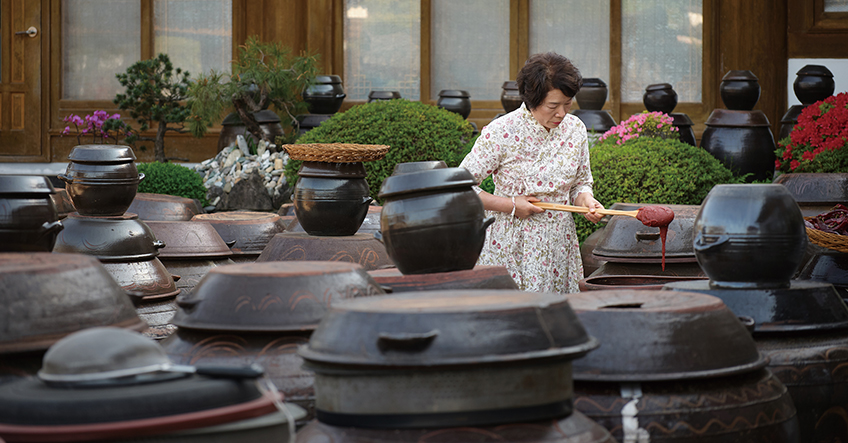 When gochujang ingredients are mixed in an earthenware jar in winter, it ferments until upcoming next summer.
When gochujang ingredients are mixed in an earthenware jar in winter, it ferments until upcoming next summer.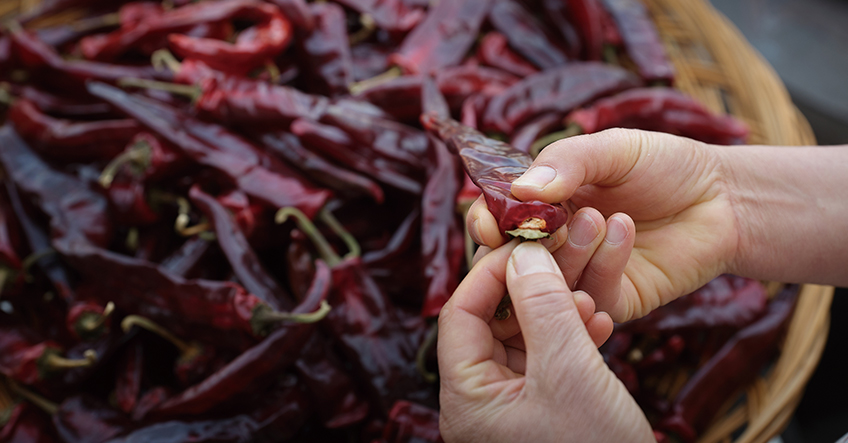 Sun-dried red peppers turn into gochujang, which then requires a long fermentation process.
Sun-dried red peppers turn into gochujang, which then requires a long fermentation process.Nature’s Gift of Perfect Fermentation
Koreans have consumed fermented paste for a long time as an essential part of their diet. While other regions have their own types of paste, Sunchang-gun is famous for its gochujang because of the county’s natural environment. Premium gochujang can be crafted only with plenty of sun and unpolluted air, and therefore this county has the perfect environment to meet these conditions to grow high quality ingredients such as peppers and beans. Underground aquifer water is also drawn from the Seomjingang River, which is reputed to have the country’s cleanest water. In addition to Gangcheonsan Mountain’s dense forest blocking cold wind in the winter, Sunchang-gun’s annual climate stays around 12-13 degrees Celsius with 70 percent humidity, which makes it ideal for fermentation. Above all, the real secret behind the spicy paste is believed to be each gochujang master faithfully preserving a recipe handed down and developed over generations by their families.
Making gochujang requires considerable patience; just preparing the ingredients takes more than a year. Farmers wait until the beans grow ripe to make blocks of meju, and harvested peppers need to be sun-dried. Meju is usually made in late summer for processing in winter into gochujang. When gochujang ingredients are prepared and mixed in a jar, they are fermented for a year before serving.
The village also offers tours that showcase traditional fermented sauces and pastes, including Onggi (Earthenware Jar) Experience Hall, Traditional Paste Museum, Fermented Sauce Underground Tunnel and a meju factory. So more than just a provincial area, Sunchang Gochujang Village is a bastion of traditional Korean fermentation.
 As the lid comes off, salty and savory smells of traditional Korean soy sauce spread everywhere.
As the lid comes off, salty and savory smells of traditional Korean soy sauce spread everywhere. Blocks of fermented soybean, called meju, are hanging under the roof in a row. They are used to make doenjang (soybean paste) and gochujang (red chili paste), both of which are essential for Korean cuisine.
Blocks of fermented soybean, called meju, are hanging under the roof in a row. They are used to make doenjang (soybean paste) and gochujang (red chili paste), both of which are essential for Korean cuisine.Becoming the Big Cheese
Imsil Cheese Village has earned an unlikely reputation as the country’s cheese mecca. The dairy product is not commonly found in Korean cuisine, so cheese production in Korea might sound unfamiliar to many. Yet a variety indigenous to Imsil-gun County has won the grand prize at the Korea Master Brand Awards for six consecutive years and is recognized as a specialty of Jeollabuk-do Province.
Imsil cheese was the passion of a young Roman Catholic priest from Belgium, Didier t’Serstevens (known in Korea as Ji Jeong-hwan), who turned the small country town into a major player in the domestic cheese sector. When he moved to the county in 1959, the Imsil-gun governor asked him to do something for residents. The priest then brought two goats to start a business and boost the regional economy.
Three years of relentless efforts to create cheese, which even included visiting Europe to learn production techniques, finally paid off. The road to marketing the product in Korea was rough, however, considering that cheese was a foreign concept to Koreans. Ji found a way by supplying a large volume of his cheese to hotels in Seoul, causing the business to take off and diversify to offer a wider selection of cheese. As demand for pizza in Korea rose from 1980, that for mozzarella spiked dramatically. Imsil cheese, fully prepared to meet the soaring demand, soon found itself the country’s most famous cheese brand. In the 2000s, Imsil Cheese Village was established to foster the priest pioneer’s legacy and cheese culture in the county.
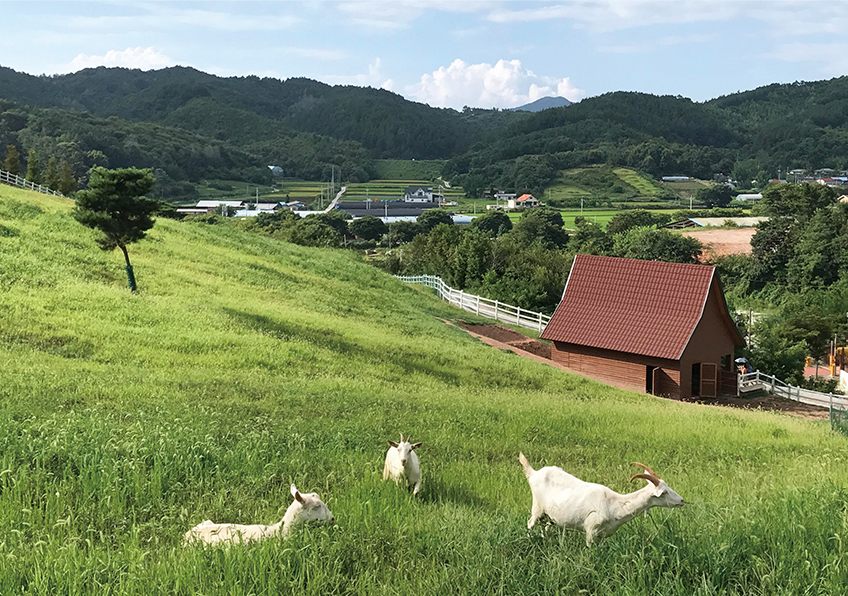
Goats are enjoying the sunshine while grazing in the pasture.
More Cheese, Please
As Imsil cheese grew more popular, Imsil-gun expanded its business into a nationwide brand called Imsil N Cheese. When products are made at the county’s small dairy processing factories, Imsil N Cheese Cluster Corporation picks them up and handles logistics. Even small independent businesses like dairy cow ranches or cheese factories share the Imsil N Cheese brand.
Along with the village, the county also hosts the tourist site Cheese Theme Park and Imsil Cheese & Food Research Institute. At the park, the exhibition hall displays cheese products made in town. The institute also runs educational programs on producing cheese as well as developing new products; students can watch ripened cheese and even taste it. Nibbling on cheese with a sip of Muju-gun County’s meoru (Korean wild grapes) wine is simply an unforgettable experience.
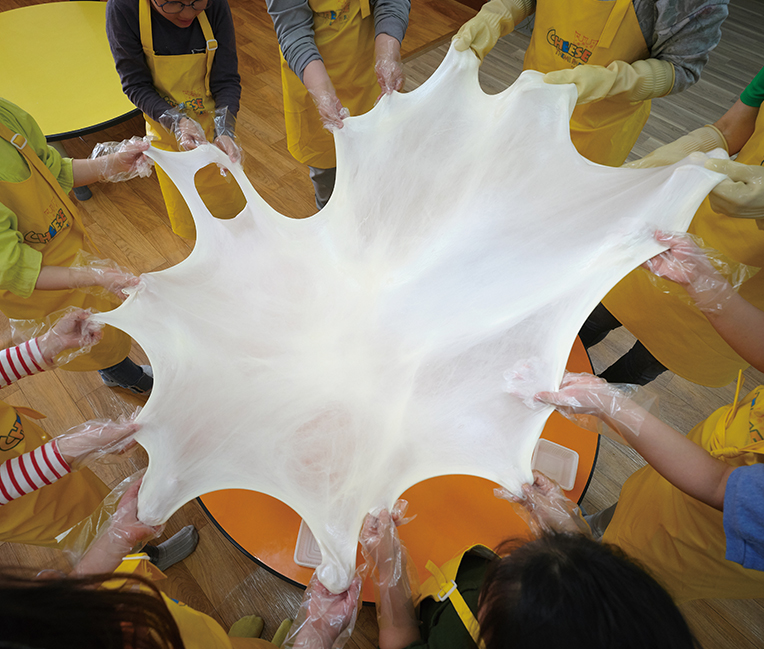 The Imsil Cheese Village offers a “make your own mozzarella” program for visitors.
The Imsil Cheese Village offers a “make your own mozzarella” program for visitors.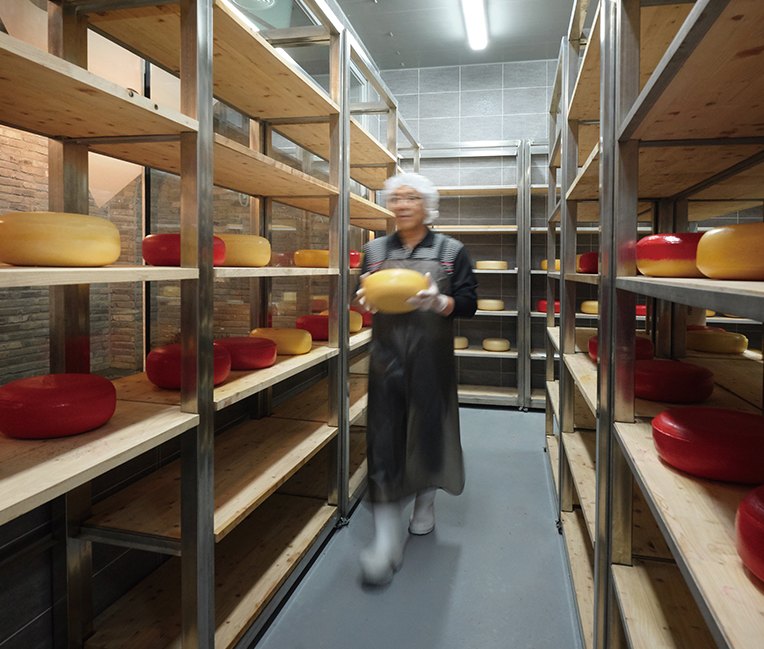 Cheese is ripening in the room with its vibrant color and distinctive smell.
Cheese is ripening in the room with its vibrant color and distinctive smell.October Festivals
Both Sunchang-gun and Imsil-gun counties will host festivals in October related to their respective specialties. The Sunchang Fermented Food Festival is held every fall in Sunchang Gochujang Village, offering hands-on programs such as making gochujang and tasting authentic Korean dishes made of the paste like cheonggukjang (rich soybean paste stew) and jangajji (pickled vegetables). The Imsil N Cheese Festival is also held in Imsil Cheese Village and at Cheese Theme Park. This year’s festival will commemorate the memory and legacy of Imsil cheese founder Didier t’Serstevens, who died in April this year.
Visitors can take advantage of the Jeonbuk Tour Pass issued by the province for a more cost-effective tour. The pass can be used at facilities in both counties as well as in night concerts at hanok (traditional Korean house) and small theaters.
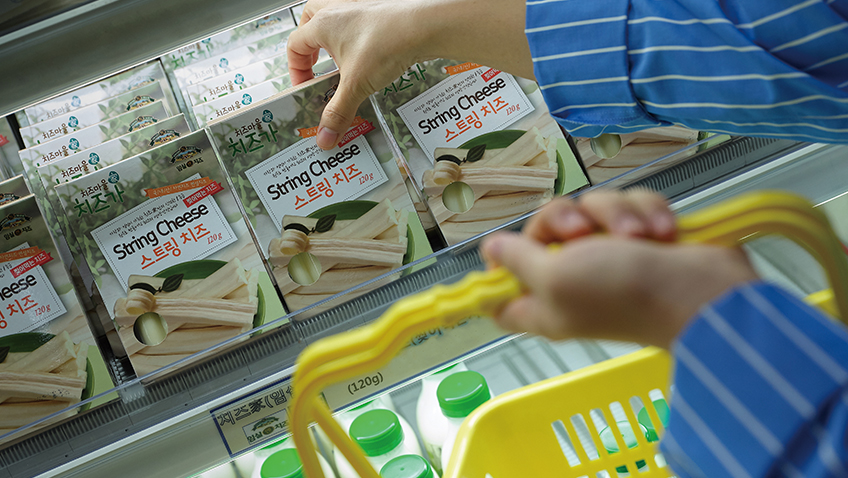
A variety of dairy products are available in the small town of Imsil-gun County.
Other Articles















